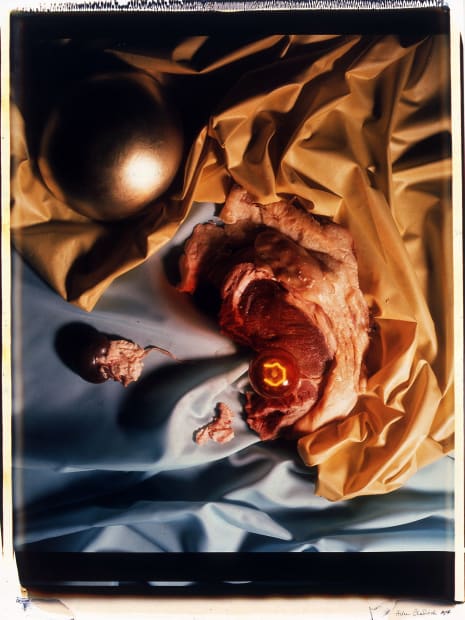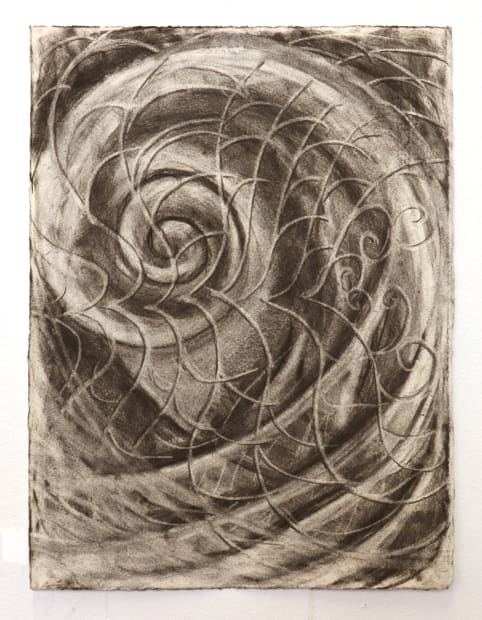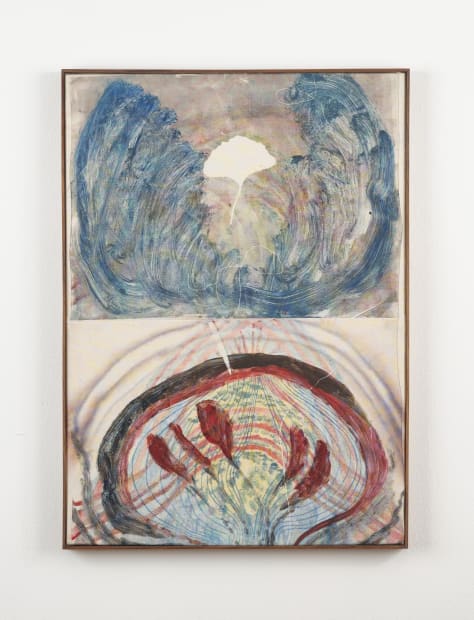-
-
Chapter III: Self
Edel Assanti is pleased to present Host – a multi-chaptered online exhibition exploring the expansive topic of embodiment: the experience of navigating and perceiving the world from the perspective of a body.
Chapter III: Self
Host’s third and final chapter explores the body’s relationship to ideas of selfhood. The conception of the individual self rests on our experience of consciousness as a singular voice, issuing commands to a compliant body.
“Individual” = that which cannot be divided any further. Yet the body is an ecosystem in which human cells are outnumbered by bacterial cells.
The conception of the indivisible and individual self now appears as a fading illusion, replaced by a permeable, collective idea of human agency comprised of microorganisms, fungi and viruses. The singular autonomous voice gives way to a symbiotic interspecies chorus.
Chapter III: Self explores the intersection of biology and identity through dissections and non-figurative representations of the body, unravelling a plural, porous idea of agency.
-
 Courtesy Rijksmuseum.
Courtesy Rijksmuseum. -
In KINKE KOOI’s drawings the artist enlarges small subtleties to the level where viewing becomes a haptic experience. Her obsession with soft, undulating forms is evident in her sensuous, mesmerising works that in her own words prevent “the sharp from being sharp”.
-
 Courtesy Private collection, New York.
Courtesy Private collection, New York. -
Formerly a painter, Kooi settled on drawing that in her hands takes on an organic quality; “Maybe it has to do with a longing for saturation, not knowing when to stop, on and on, time and again in the hope of finally reaching a limit. The bulges in my work emerge from that insatiable feeling.” Those bulges, formed of numerous fragile, swollen lines reconcile the distance between things and people.
-

Helen Chadwick
Preliminary study for Meat Abstract, 1988Cibachrome photograph mounted on aluminiumApprox 117 cm (diameter)
Approx 46 1/8 in. (diameter)Photo © The Estate of the Artist.Courtesy Richard Saltoun Gallery.Click on the image to learn more about this work. -
HELEN CHADWICK's work of the 1980s focused on the female body in relation to a variety of props, exploring identity through autobiography, geometry, classical mythology and the natural world. Chadwick depicted her body, in photographic and sculptural installations, as aligned both with nature (landscape, the animal world, decay) and culture (geometry, architecture). The Meat Abstracts (1988) are a series of eight large format Polaroid photographs that Chadwick made at the Victoria & Albert Museum in London in 1989. Chadwick laid materials such as suede, silk and wood veneer onto a table top, creating a field on which she arranged medleys of meat, offal and knives, brought together with light bulbs and gilded spheres and photographed from above. The series marked Chadwick’s move away from traditional forms of self-representation.
-
 Photo © The Estate of the Artist.Courtesy Richard Saltoun Gallery.
Photo © The Estate of the Artist.Courtesy Richard Saltoun Gallery. -
“I felt compelled to use materials that were still bodily, that were still a kind of self-portrait, but did not rely on the representation of my own body.”
- Helen Chadwick on The Meat Abstracts.
-
The title of JES FAN’s film Xenophoria, as opposed to the term ‘xenophobia’, refers to a love of the foreign, and is inspired by the name of a mysterious species of aquatic carrier shell. This creature, Xenophora pallidae, calcifies free-floating objects in the water to its spine, bringing foreign bodies into its own structure. Likewise, Xenophoria stages a delirious search for the eumelanin pigment – the molecule responsible for skin colour – as it manifests in both human and non-human bodies.
-

Courtesy Jes Fan and Empty Gallery.
-
Fan’s practice examines the concept of otherness as it relates to the materiality of the gendered body. Working primarily in expanded sculpture, Fan often incorporates organic materials - such as soybeans and depi-testosterone - into larger assemblages fashioned of welded steel, poured resin, and hand-blown glass. Fan’s recent research has explored the complex and porous systems formed between biological agents (including those existing in our own body) and the surrounding environment, seeking to queer the traditional hierarchy between organic and inorganic matter.
-

Courtesy Walter Maciel Gallery.
-
LEZLEY SAAR's oeuvre examines the complexities of identity through an exploration of the self as never singular or unchanging. This fragmentation is reflected by the variety of media that Saar utilises. Suspended between reality and fantasy, Saar conjures up mystical narratives populated by characters that draw on fable and mythology, addressing themes of identity, race, gender, beauty, normalcy and sanity. Her protagonists are frequently entangled with plant-life and vegetation, as their physical and cognitive experience of the world around them blur into singular compositions, suggesting a porous relationship between life-forms and the environments they inhabit.
-

Courtesy Walter Maciel Gallery.
-

Courtesy of Make Room.
-
KAT LYONS' work examines sentience beyond the human realm, overturning anthropothentric hierarchies of subjectivity. Lyons’ paintings celebrate a plurality of agency and invite considerations for phenomena occurring outside of human understanding or capability. Non-human cognitive and emotional experiences are explored in a bid to broaden our sphere of moral concern, recognising the entangled web that comprises earthly livelihood.
-

-
AIMÉE PARROT's work combines multiple processes including printmaking techniques such as silk screening and mono printing, as well as batik and collaging fabric. By layering and repeating colour and form she creates a sense of off-kilter rhythm where solid and amorphous substances collide.
-

-
Approaching the surface of a painting as a metaphorical skin or permeable barrier, Parrot is interested in the notion that a work of art can bridge the gap between an internal reality and an external one; a physical manifestation and translation of experience. Her practice taps into an understanding of ecosystems and bodies, of our own corporeal nexus, of different forms of consciousness, and how the multifarious exchanges and interchanges across life can be understood with the sensitivity they necessitate.
-

Aimée Parrott
Spring, 2020Charcoal on 300gsm satin Somerset paper38 x 29 cm
15 x 11 3/8 in.Click on the image to learn more about this work. -
"Primarily I think about painting as a way of being in contact with the world. I find it useful to approach the surface of a painting as a metaphorical skin, a permeable barrier. I am interested in the notion that a work of art can bridge the gap between an internal reality and an external one, that it can be a physical manifestation and a translation of experience. The importance of a direct encounter with the work is something I think about quite a lot, its material presence as an object is as crucial as its visual impact as an image."
- Aimée Parrott
-

-

Join our mailing list
* denotes required fields
We will process the personal data you have supplied in accordance with our privacy policy (available on request). You can unsubscribe or change your preferences at any time by clicking the link in our emails.













